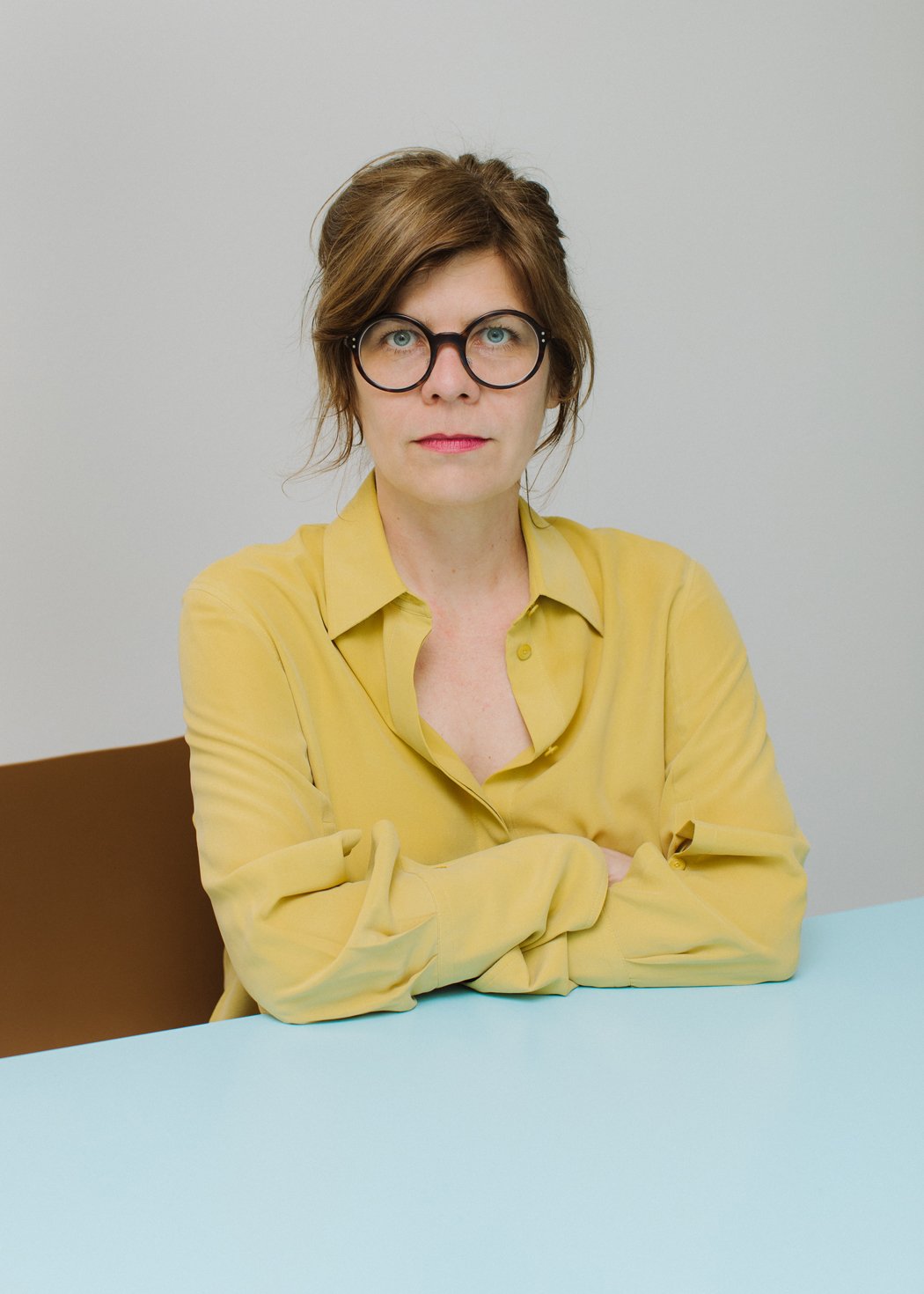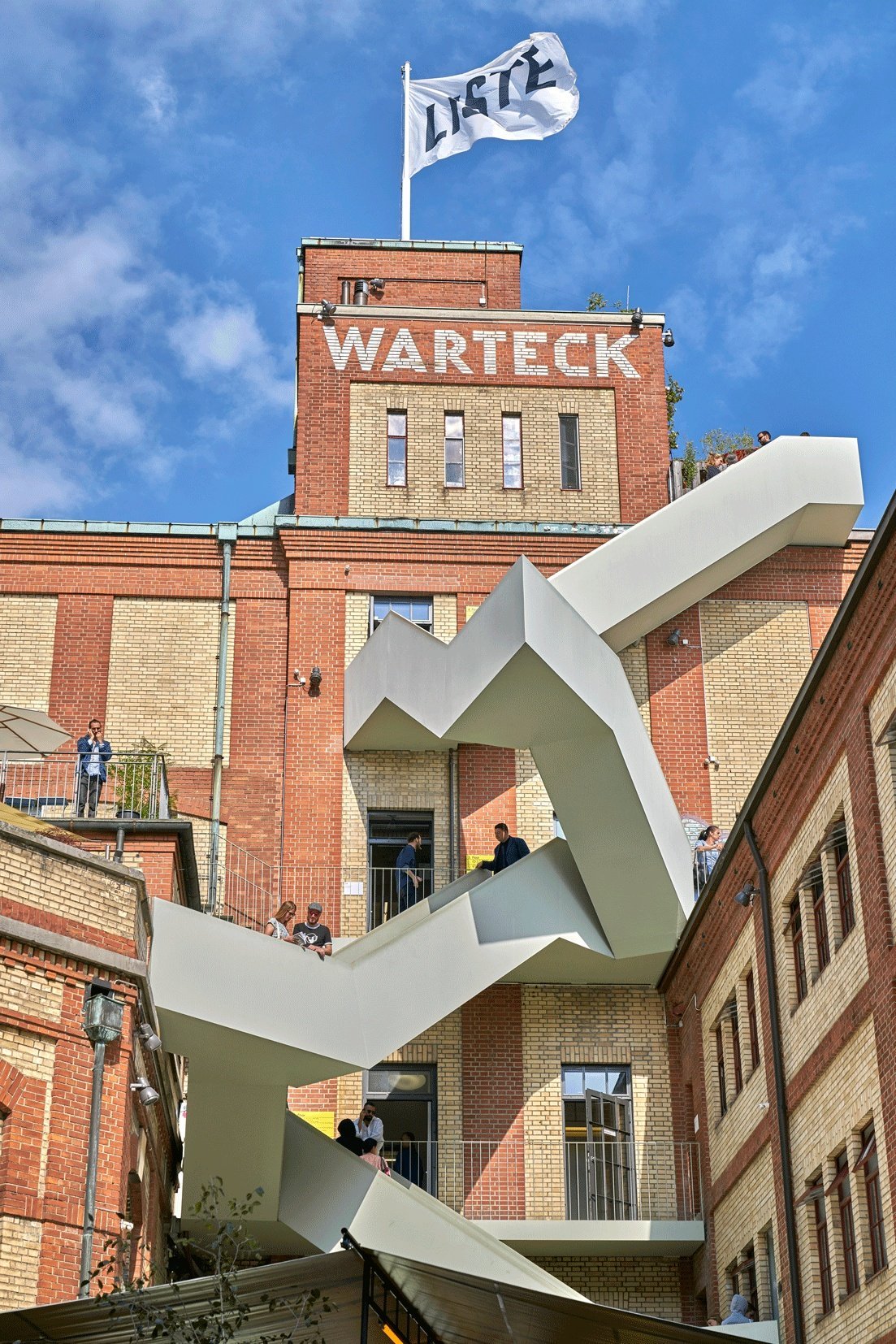Joanna Kamm on the present of emerging art (an interview)
Director Joanna Kamm sheds some light on Liste’s strategies to tackle the current situation through solidarity and risk taking.
Arguably, Liste in Basel is the most important contemporary art fair for emerging artists and galleries worldwide. Influential galleries today such as Neu, Franco Noero, and kurimanzutto participated in Liste at their start. International collectors willing to discover and support novelty in contemporary art have looked at Liste with eager eyes since its first edition in 1996. For this article, we have reached out to the fair director Joanna Kamm to ask a few questions about her current policies, focusing not only on resilience strategies in today’s context of global epidemic and economic downturn, but also on Liste’s future vision for the segment of the art world the fair is supposed to represent.

Liste has been postponed to September due to the current Coronavirus epidemic. This has been the fate of many other art fairs, some of which have resorted to online viewing rooms and sales to guarantee that galleries retain income and visibility. Are you thinking of implementing a similar strategy for Liste?
Joanna Kamm: Up until now, online viewing rooms are primarily implemented by those fairs that cannot take place. We still hope that the situation will have stabilised by September and that we will be able to hold Liste. In the meantime, we are giving the galleries the opportunity to present themselves via social media. At the moment they can present an available work from their current exhibition, no matter if the exhibition has been locked down, postponed or, as with some of our Asian galleries, actually reopened. If we have to cancel Liste, we will certainly get in close exchange with the galleries to see how we can support them through further channels and what would be actually useful to them. The last weeks have taught us that it is best to react flexibly and spontaneously to the situation.
According to the last Art Basel and UBS Global Art Market Report, the online sales of contemporary art decreased in 2019. This trend is likely to be different for this year, since many traditional channels have been forced to close. However, in the long run do you think selling and buying contemporary artworks online has lost its initial, fashionable appeal?
Joanna Kamm: As the current situation shows us, it is very good and very important that galleries and artists have as many diverse possibilities as possible to present, offer and sell artworks. That’s why I believe that, especially from the current experience, the online sale will remain an important and stable factor. Nothing can replace the personal experience of an artwork and the personal interaction between collectors, gallerists and artists. In addition, it’s easier to establish a relationship of trust between collectors and gallerists on a personal level than via online channels. Once this is established, it’s easier to sell via e-mail or online viewing rooms. That is why I am still very convinced that fairs are important and cannot be replaced.
The same report confirms that in 2019 the biggest galleries (turnover above 30m USD/year) experienced the biggest growth just after the medium to small galleries (turnover between 250-500k USD/year). A few commentators believe that the present situation of economic downturn will benefit the biggest galleries even more, leaving the small and medium ones to struggle. Do you agree with this opinion? How do you ensure Liste helps the dealers it is supposed to support?
Joanna Kamm: If we look at the situation after the financial crisis of 2008, this is unfortunately exactly what happened. Many important collectors who are not among the super-rich had no more financial resources to collect, while a new group of investment buyers appeared who were betting on secure values. We as a fair for new discoveries in contemporary art are strongly affected by such eruptions. I can only hope that the Corona crisis, which seems to have even a larger impact on the economy, will inspire solidarity. I mean this in the sense that the focus is not on one’s own advantage and profit, but on the awareness that young galleries are taking an extremely large risk, from which we all benefit. Last year I wrote about this in the editorial of the fair catalogue and it applies more than ever in the current situation. Many artists would remain undiscovered without gallerists who are willing to take great risks in tracking down the unknown and–often without insurance that the market will embrace the work–enable artists to have their first solo exhibitions and present their art to international audiences at fairs. It is through galleries’ commitments that we have the opportunity to see art that not only describes the present but also creates it–with new aesthetics, media and values. Living with this art leads to a richer, different vision of the world. So it’s not just an act of generosity, but a necessity to buy art from young and mid-sized galleries to enable them and their artists to continue working. Because we need their art. Solidarity is always about interdependence, it is about having a common goal and that should be the preservation of culture. Liste will make every effort to draw attention to this, again and again.
Apart from that we are working on practical things, like collecting financial aid, so that we can support the galleries financially. We are very thankful to our long-time main sponsor E.Gutzwiller & Cie, Banquiers, for supporting us more than ever in these difficult times and we are very happy about a donation received by the Liste-near Foundation for the Promotion of Contemporary Art in Basel, which will enable us to support production costs of artists for the first time this year. Prior to the pandemic, we were already in conversation with the Foundation and planned to introduce this special support starting next year. However, due to the current difficult situation for our gallerist and artists, they have decided to offer the support already this year. We are very grateful for this and it’s something very unique for an art fair to support production.
Last but not least, we will try to attract as many new members as possible for our Friends of Liste circle, who will be able to specifically reduce stand costs with their contributions. The annual membership is only CHF 250, so it’s a kind of crowdfunding. At the moment 13 galleries receive this kind of support.

Just like art galleries (here is our article about gallery magazines and publishers), many art fairs have also been producers of content. Here we think of curated exhibitions, public art, and art writing sponsored by them directly or within their context. Do you think this tendency will increase in the future and to what extent will the current emergency situation be responsible for this change?
Joanna Kamm: I can only speak for us, because it depends on the profile of the respective fair which additional content production makes sense. Liste provides young galleries and their artists with the best possible international platform and gives visitors the best opportunity to engage with new art. That is how we differ from other fairs: we are a platform devoted to new positions in contemporary art. Thus, the content, for me, lies mainly in the presented art itself. There are so many new artistic positions to discover at Liste that require time and concentration. With our special fair concept we foster the pure and personal experience with the artworks. For example, we have 47 solo presentations this year. This is not something we are asking for, but the galleries themselves want to give a deeper insight into the work of their artists.
You have launched a social media campaign through the use of the hashtag #ListeRecommends, promoting different initiatives of small and medium galleries around the world that aim at keeping their artists and artworks visible (we think of not.cancelled Vienna for example). Some of those galleries are not exhibitors at Liste 2020, so we wonder whether this sense of solidarity you have mentioned in the past in relation to the fair is now being extended to those who will not take part in it?
Joanna Kamm: Exactly, I think it’s very important that we now look beyond our own little world and do everything in our power to support galleries and their artists in general. As much as borders are now playing a role again, they shouldn’t in terms of support. When we see a great initiative like not.cancelled, which is now even being continued in Berlin, then it would be absurd not to support it because not all involved galleries are doing Liste this year. The galleries are struggling a lot and we want to use the voice we have for them. The more of them that benefit, the better. Apart from that, Liste has a long history and many galleries have started their international career by participating in Liste. For us, these galleries are still part of the Liste community.
Some weeks ago British novelist Olivia Laing wrote an opinion piece in The Guardian about the role of art in the present situation. She finishes with optimism: “we have to keep each other afloat, even when we can’t touch. Art is a place where that can happen, where ideas and people are made welcome. It’s a zone of enchantment as well as resistance, and it’s open even now.” What is a good argument for a collector today, who might decide it is no longer the time to support art, artists, and their galleries, to convince them of the contrary?
Joanna Kamm: I totally agree with Olivia Laing. In a world where uncertainty is the dominant feeling, artists take it to the extreme and give shape to these immaterial states. I think we do not yet understand what happens right now and how the future will look like, but art can make it speculatively visible. It doesn’t matter whether art is intrinsic, abstract or documentary, whether it explores concrete urban states or fantastical realms, because it’s about diversity and the power of art and culture, especially when the world is in crisis. The power to develop new ways of seeing and thinking is the artists’ gift to us. This is important for society and one could go so far as to say that, especially in these times, the collectors have a responsibility, but also receive a lot in return. That is the solidarity I described above.
April 21, 2020
